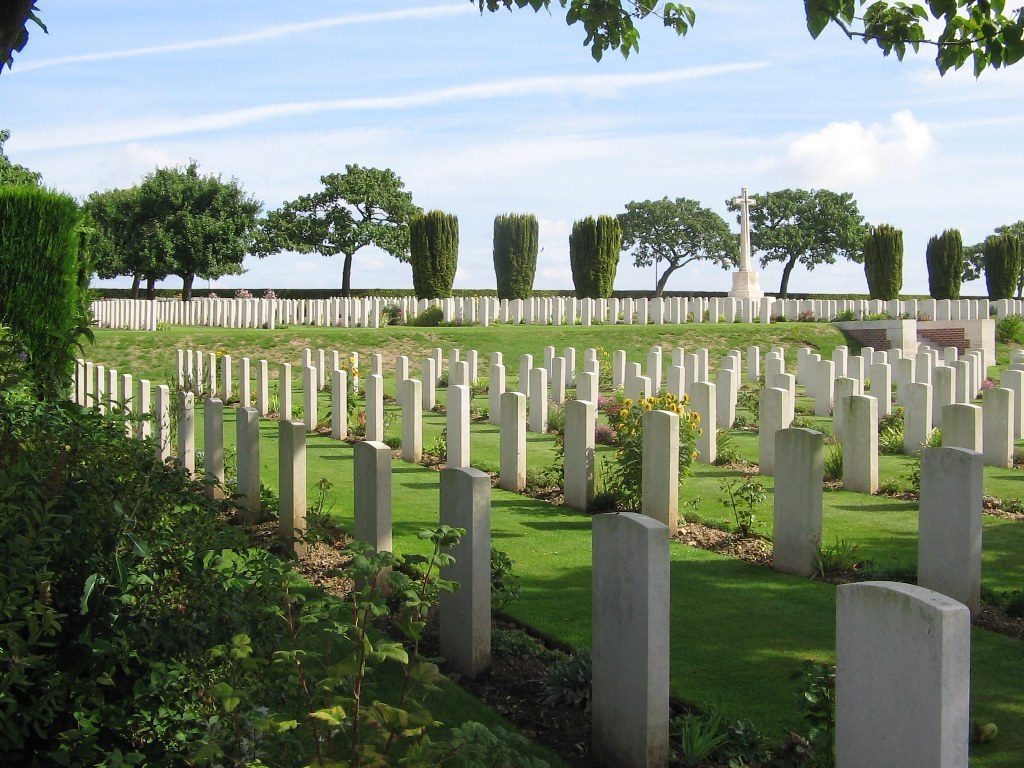Harry Gill
Date of birth: 1895
Date of death: 15.12.1916
Area: Outwood
Regiment: King's Own Yorkshire Light Infantry
Family information: Son of Henry Francis and Eliza Gill
Rank: Private
Service number: 1665
War Service
Harry joined the Wakefield Territorial Force, the 4th Kings Own Yorkshire Light Infantry.
On 13th April 1915, Private Harry Gill, along with the 1/4th Battalion, KOYLI left York and travelled, via Folkestone and Boulogne, to join the British Expeditionary Force in France. Two weeks later, on 28th April, the 1/4th KOYLI entered the line near Fleurbaix, in the Bois Grenier. The following month the 1st West Riding Brigade, was designated 148th Infantry Brigade, 49th (West Riding) Division.
On 9th July 1915, the 49th Division, moved into the sector between Ypres and Boesinghe, which was the left flank of the British Army line in Flanders. Throughout the summer, the 49th Division was engaged in constructing and repairing trenches and strong points, which were constantly shelled by the enemy artillery. After rain the ground became a quagmire and, as winter approached, trench feet became a problem for the troops. Shortly after the gas attack of 19th December 1915, the 1/4th KOYLI, in Brigade, was withdrawn from this sector
During the spring of 1916, the 1/4th KOYLI, was used by the 112th Railway Construction Company near Acheux. This was followed by training near Villers-Bocage, for the forthcoming battle.
On the 1st July 1916, the opening day of the battle of the Somme, the 49th (West Riding) Division was in Reserve. On 6th July, the 1/4th KOYLI relieved the 1/5th KOYLI, in the “A” Line trenches. At 02.00 hours on the 7th July, the enemy opened an intense bombardment on the 1/4th KOYLI positions in the “A” Line, resulting in numerous casualties. At 02.50 hours, enemy bombers attacked and there was heavy fighting with bombs until 06.30 hours, at which time the forward companies, with no bombs left, were forced to retire to the original British front line. Later that day the battalion was withdrawn to Hedauville for reorganisation.
The 1/4th KOYLI did not return to the trenches until the 21st July, when they were deployed in the Leipzig Salient. On the 23rd July, part of the battalion was ordered into attack, with a view to extending the British position on the Salient. Heavy casualties were suffered crossing “No Man's Land” and the 1/4th KOYLI were forced to retire. The 1/4th KOYLI remained within the Somme battlefield until 23rd September. At this time they were deployed digging trenches and on other working party duties, when not in the front line.
After a tour in the front line in the Fonquevillers sector, on 19th October 1916 the battalion moved to the Hebuterne sector. With the weather deteriorating, the 1/4th KOYLI stayed in this sector for the rest of the year, carrying out the every-day duties associated with life in the trenches. The German artillery and mortars were still active and the Battalion sustained casualties.
At the beginning of November, when the 1/4th KOYLI was holding the front line of the Hebuterne sub-sector, their positions were frequently a target for the German trench mortars. At 16.00 hours on 3rd November a mortar shell fell in the entrance to a tunnel at “Z Hedge Trench” which was occupied by the Battalion. 2 Officers and 3 Other Ranks were killed and 7 Other Ranks were wounded.
One of the casualties was Private Harry Gill, who was injured and evacuated from the front, to a hospital in Abbeville. However, on 15th December 1916, six weeks after receiving his injuries, he died from his wounds. He is buried in Abbeville Communal Cemetery Extension, which now contains 1754 burials from the First World War.
Family Life
Born in 1895, Harry Gill was the youngest of the large family of Henry Francis Gill and his wife Eliza, of Newton Hill, Outwood. His father and four of his older brothers were coal miners and, when old enough, Harry followed them into the mining industry. He obtained work at Lofthouse Colliery, where he was employed underground as a haulage boy.
 Abbeville Communal Cemetery Extension
Abbeville Communal Cemetery Extension

